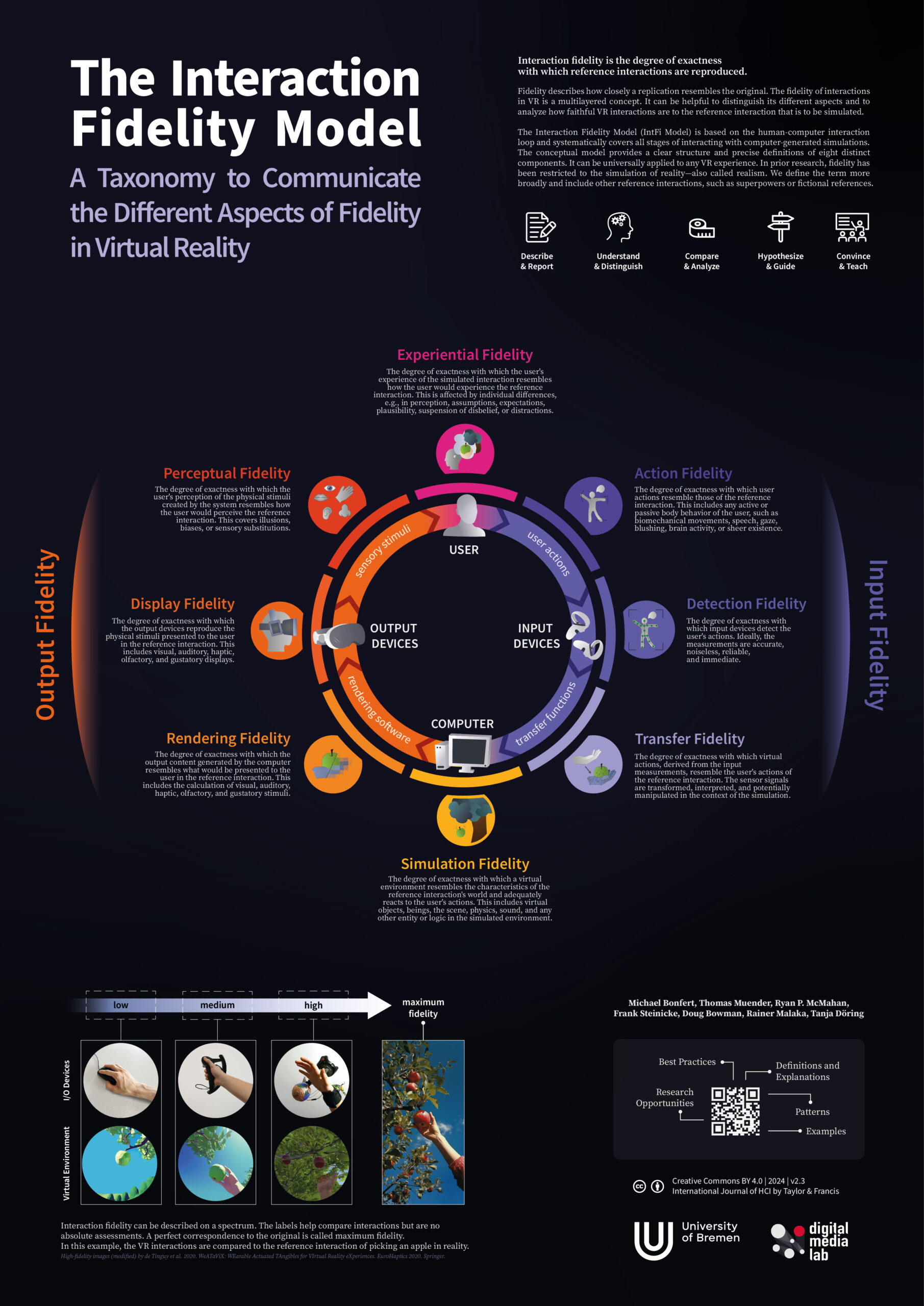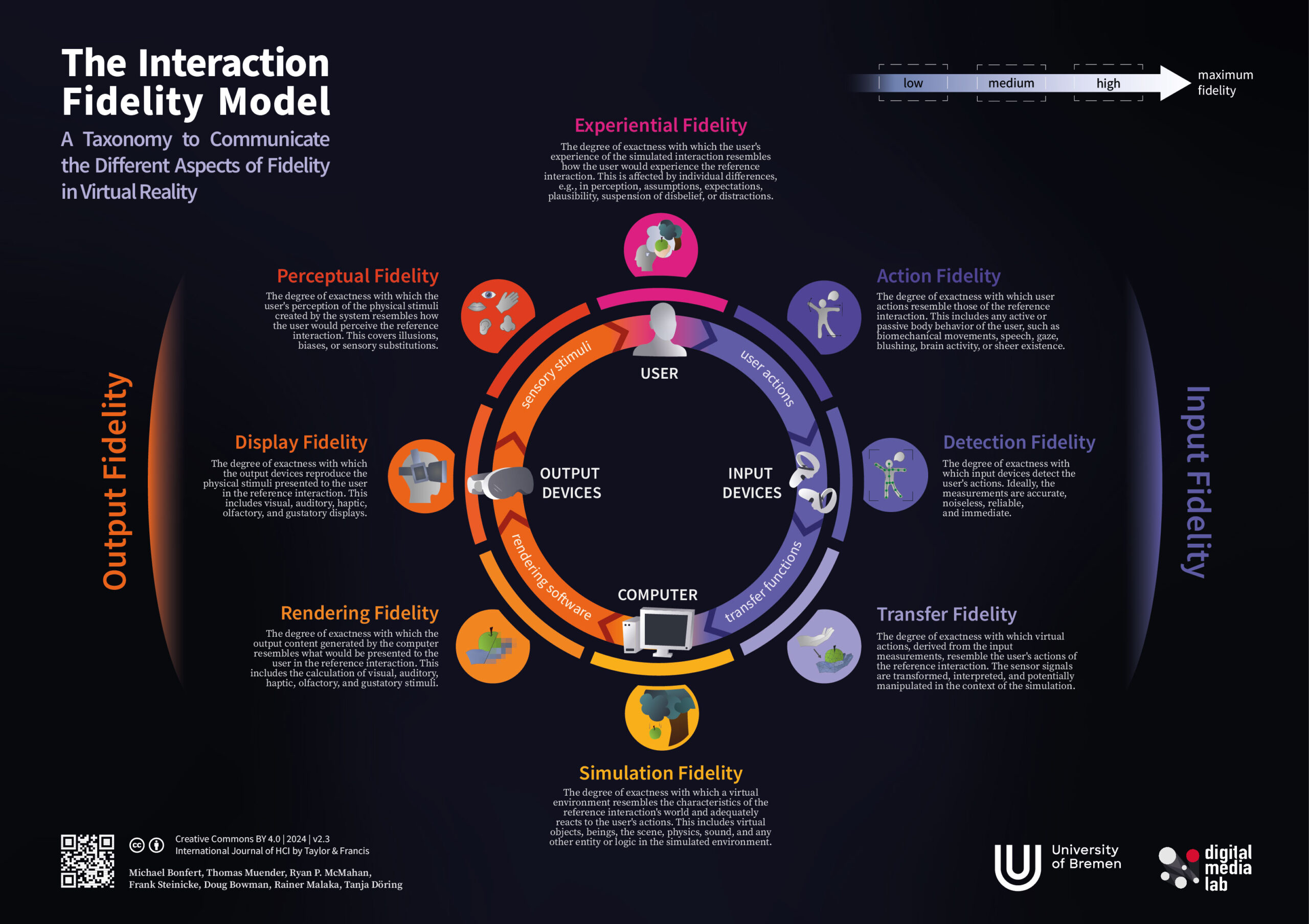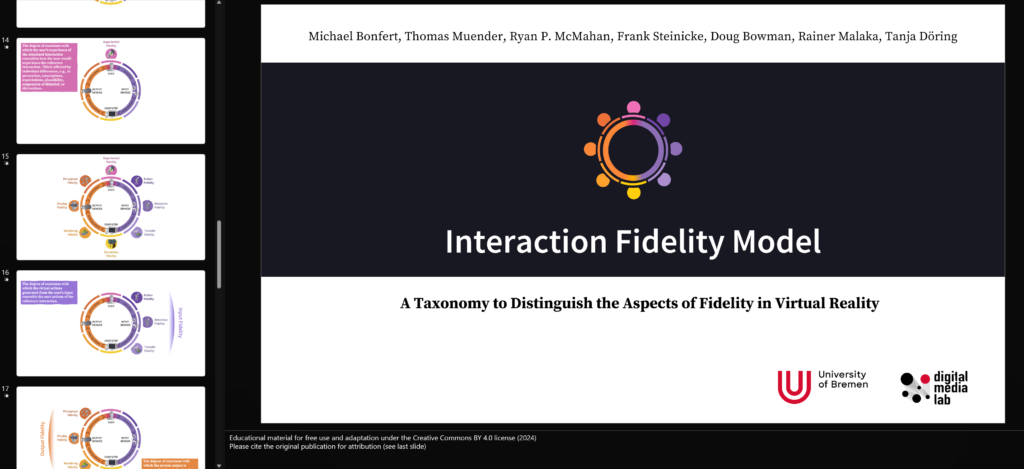IntFi Model – Posters
The Interaction Fidelity Model (IntFi Model) helps distinguish and communicate the different aspects of fidelity or realism of any VR interaction. The taxonomy provides clear terms and definitions in a simple structure, guiding you through the analysis of how closely your system or experience resembles the interaction to be simulated. Learn more about the model in my Portfolio.
While developing the IntFi Model, our team of co-authors at the University of Bremen had different visualizations of the IntFi Loop hanging on the walls. This not only supported the refinement of the model but also helped our understanding of interactions in many other projects. We repeatedly walked up to the posters to illustrate an argument in discussions and used them in teaching. Maybe it’s also helpful to you and your team.
Posters for Team Work and Education
This motivated us to design sleek and informative posters that we provide as supplemental material with the open-access journal publication. To facilitate discussions about interaction fidelity in XR teams worldwide, we offered free prints of the posters to hang in meeting rooms, lab kitchens, hallways, or home offices for quick reference. We no longer provide free global shipping. But you can still download the digital version for free and get the high-res file for printing in the supplemental materials. We hope the posters are as helpful for your work as they are for ours.— Michael, Thomas, Ryan, Frank, Doug, Rainer and Tanja


Specs
- The Large A0 Poster (portrait) has the format 84,1 cm × 118,9 cm = 1 m² (approx. 33″ × 47″)
- The Medium A1 Poster (landscape) has the format 59,4 cm × 84,1 cm = 0,5 m² (approx. 23″ × 33″)
Slides
Did you know there is also a slide deck available for use in your teaching? Get it here!

Cite this paper
Michael Bonfert, Thomas Muender, Ryan P. McMahan, Frank Steinicke, Doug Bowman, Rainer Malaka, and Tanja Döring. 2024. The Interaction Fidelity Model: A Taxonomy to Communicate the Different Aspects of Fidelity in Virtual Reality. International Journal of Human–Computer Interaction, 1–33, Taylor & Francis. https://doi.org/10.1080/10447318.2024.2400377
License
This open-access article and its supplemental material are distributed under the terms of the Creative Commons CC BY license, which permits unrestricted use, distribution, and reproduction in any medium, provided the original work is properly cited. If you want to make adjustments to the poster layout, I can provide you with the Adobe Illustrator source file.
The Klaus Tschira Foundation, a German non-profit organization, generously funded this initiative as part of its mission for science communication through the graduate school Empowering Digital Media at the University of Bremen. We are grateful that they enabled this initiative and allowed printing and shipping the posters to labs and teams worldwide.